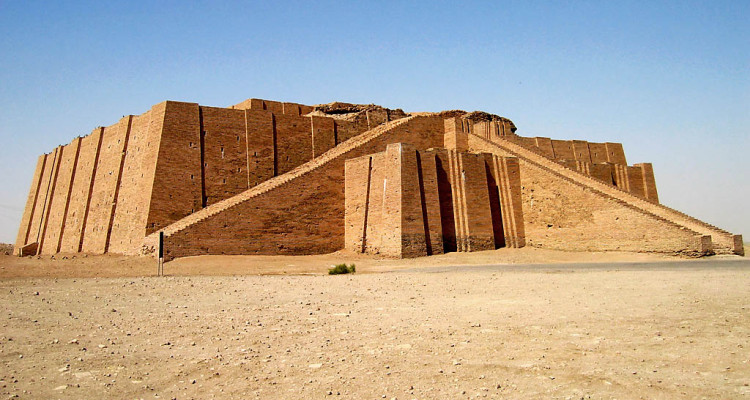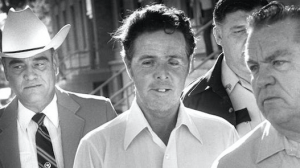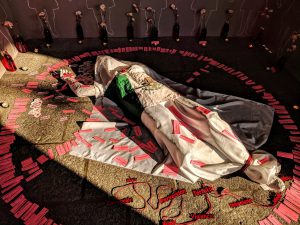The presence of temples as places where people nourish their faith and religion has existed for centuries since the beginning of the earliest civilizations. Since their foundations, temples of any religion have represented places where people could find spiritual and religious comfort. Besides this main function, temples have also played important roles in the management of their cities, impacting their societies in significant ways.

Temples in Ancient Mesopotamia, better known as “community temples,” were basically operated by priests and priestesses that were often younger relatives of the rulers. Their main role was to intervene with the gods for the fortune of their communities through prayers and offerings to their deities. In exchange, the community provided priests with food, drink, and clothing.1 Each temple was dedicated to a major deity, who was the main god of the city. Often the priests serving the temple might have been the former governor of that particular city-state.2 Like many religious organizations today, temple communities also provided help to the people in the community when in need. Temples, for example, used to take care of orphans, supply grain in time of famine, and provide ransom for people who might be captured in battle.3
Mesopotamian temples were not places where people particularly went to worship. They were thought to be the home of the city deity, and for this reason they were equipped like households. They were built with kitchens, tables (in the form of altars), living rooms, and the most important of the rooms, an inner sanctuary where a statue of the major deity stood in one of the building’s walls. Often, these temples used to have staircases to the roof, where rituals and offerings to the deity were performed (e.g. animal sacrifice to feed their god).4

Rams, sheep and doves used to be sacrificed to feed the gods. | Courtesy of National Geographic Spain
In hindsight, the role of temple communities was not limited to the city’s religious life, but they were also large socio-economic organizations.5 Temple communities in Mesopotamia also had an influence in the economy and social living of the cities. Among many of their functions, the operation and maintenance of irrigation systems was one of their highest priorities. They also controlled and managed the industry while developing and manufacturing products that later would be exchanged in foreign trade. Along with this, temples were extensive places for storaging goods and merchandise.6 The records priests and temple staff generated were so extended that some modern economic historians developed the conclusion that the Mesopotamian economy “was dominated by the temple, giving rise to the characterization of ancient Mesopotamia as a ‘temple-state economy.’”7 This was clear to see, since temples were also in charge of the finance of the city. They were in charge of collecting taxes, administrating a system of price control, regulating interest charges, financing foreign trade and legislating all private financial transactions. They also redistributed income by granting money to those in need, and often they also made loans to private individuals.8 Temples also played a role in legal matters and in maintaining social control. Marriages were performed; priests granted divorce, registered births, and administered the law.9
For the importance of their role as a major socio-economic organization as well as their role of mediators between the gods and the city, it can be concluded that Mesopotamian temples possessed a large power among the events happening in the daily life of the individuals living in a particular city. Maybe without the temples, it might have been more difficult for the rulers of the city-states to carry out the functions that these religious organizations used to perform.
- Jerry Bentley, Herbert Ziegler, and Heather Streets Salter, Traditions & Encounters: A Brief Global History Volume 1, 4 edition (McGraw-Hill Education, 2015), 15. ↵
- Richard L. A. Sterba, “The Organization and Management of the Temple Corporations in Ancient Mesopotamia,” The Academy of Management Review 1, no. 3 (1976): 16. ↵
- Bentley, Ziegler, and Streets Salter, Traditions & Encounters: A Brief Global History Volume 1, 15. ↵
- Ronald Wallenfels, World Eras – Vol. 8, Ancient Mesopotamia (Detroit: Gale, 2004), 162. ↵
- Sterba, “The Organization and Management of the Temple Corporations in Ancient Mesopotamia,” The Academy of Management Review, 17. ↵
- Sterba, “The Organization and Management of the Temple Corporations in Ancient Mesopotamia,” The Academy of Management Review, 18. ↵
- Wallenfels, World Eras – Vol. 8, Ancient Mesopotamia, 161. ↵
- Sterba, “The Organization and Management of the Temple Corporations in Ancient Mesopotamia,” The Academy of Management Review, 19. ↵
- Sterba, “The Organization and Management of the Temple Corporations in Ancient Mesopotamia,” The Academy of Management Review, 19. ↵



61 comments
Pamela Callahan
It is strange to think that in the past, religion and government were somewhat intertwined in a society without causing disputes among the people. I always thought that temples were places of worship and I had no idea that they were so influential in the development of irrigation systems. I think that having the temples control the city was more productive than it would have been to have a separate form of government at the time.
Eric Ortega Rodriguez
This article was very informative. Like most people, I believed that Temples in ancient Mesopotamia were used specifically for worship. I would have never imagined that they were used for social and economic reasons. I found it interesting how temples were used to control finance and for legal actions like marriages. Another aspect I found fascinating was that they would help those in need by redistributing income. This article was not only extremely informative but well written as well, as it covered a topic not many people know about very clearly or knew very little about.
Ysenia Rodriguez
I never new that temples in Mesopotamia were such a large part of everyday life for citizens. We normally hear about temples in the Mayan and Aztec empires and how they were used for worship and homes for offerings given to their gods, but in Mesopotamia, temples were so much more: they were orphanages, a place for tax collecting, and a place for public records such as marriage and birth registers.
Micaela Cruz
For the longest time, I had believed that the temples of the Mesopotamian cultures, the Aztec and Mayan cultures were used primarily for the worshiping of gods and for sacrifices. It was interesting to learn how these temples were used for so much more than that, such as being used as an orphanage of sorts, a place where those captured in battle could stay, and how it held a major influence over the economy as well as the everyday living of the people.
Daniela Duran
This was a very informative article with a lot of interesting facts that where brought about with precision. I truly enjoyed reading about these temples, not only because it tells us about the historical and cultural value of our ancestors, but also because it broke my naivety towards the temples themselves. I always regarded temples and huge ancient architectures as simple statues that our ancestors used to worship or perhaps to offer sacrifices, only. After reading this article, however, I got to understand the real functions of a temple, and to my surprise, they were much more than I thought! I would have ever imagined that, in the inside, the temples were arranged to be a house for the deities of that particular city, nor would I have thought that the temples were used as storage for certain goods or merchandise. I was surprised by the fact that marriages took place in there, as well as some other legal issues; the reason for this is that I was astonished by the numerous functions that were performed in a simple temple. This can only mean that for the ancient Mesopotamian populations, the temple was far much meaningful than we may imagine! This article was truly enriching and interesting.
Indhira Mata
This article just opened my mind and made me realize that my thoughts on temples were no where near the truth. I had always thought or assumed temples were for worship in the ancient times. I had heard and read stories on the cursed and scary temples because many people would be captured and then killed. But now I see it was the complete opposite because the temples were the heart of their communities. They helped,rescued, and nurtured their people.
Christopher Hohman
Great article. I had no idea that Mesopotamian temples wielded so much secular power. To think that they were in charge of banking, financing, legal settlements and much more is just astounding. Nothing like those powers reside in the churchs of today. It reminds me of the church during the middle ages, when it wielded terrific secular and temporal power. It had enormous wealth and vast resources because of its land. Loved the pictures too. That ancient temple must have been even more impressive thousands of years ago.
Steven Hale
Growing up in America where there are clear distinctions between religious and political institutions, it is difficult to imagine the role these temples played. It seems the religious leaders could have held more authority over the city’s administration than the ruler himself. I wonder if this system was by design to allow the ruler some flexibility or if the political structure just developed this way on its own.
Thomas Fraire
Sanctuaries are such widely known social structures known to speak to a wide assortment of religions everywhere throughout the world. It’s extremely intriguing to think how a composed heap of minimized soil, can assume such colossal parts in such complex thoughts that encompass a general public. For instance, the money related status and propensities, and also the religious convictions of one culture.
Samuel Ruiz
The temples of long ago must have been interesting to visit. It surprised me that they were usually built of the deity and contained household rooms. I also found it interesting that they were not necessarily places of worship but places of ritual and offerings. It seems as though they had a sort of government role on terms of operation and maintenance in different areas, which was the last thing I would expect. Great article!